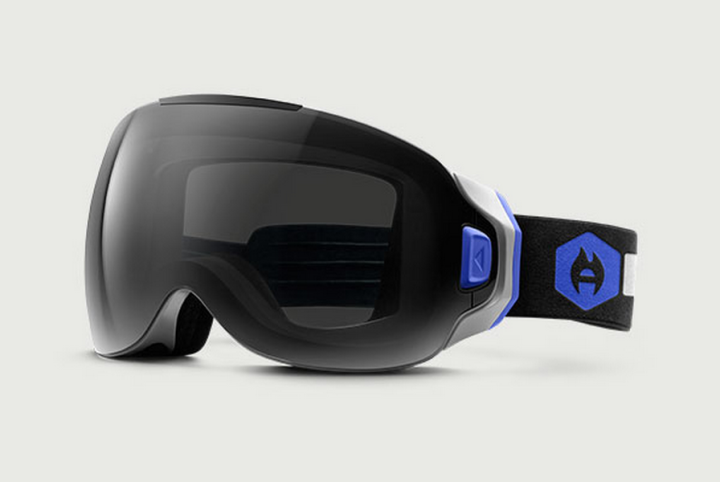
But not to worry; there’s still hope. Abominable Labs –a startup from Lake Oswego, Oregon– has developed a solution that could potentially put an end to goggle fog once and for all, regardless of the conditions you’re riding in.
Related: Recon announces new and improved Snow2 HUD goggles
Instead of special vents or coatings, the comapany’s upcoming F-Bom goggles are outfitted with a special heated lens that prevents moisture from condensing on them. Think of it like the rear window of your car, but on a much smaller scale. The lens of the googles is bonded to thin-film transparent heating element that’s hooked up to a rechargeable power source. When activated, the heating element keeps the surface of the lens to a temperature just slightly warmer than the dew point, effectively keeping it from condensing and obscuring your vision.
It’s still just a prototype at this point, but according to Abominable’s website, the F-Boms rechargeable battery can keep the goggles heated and fog-free through 7 hours of continuous use. If that’s not enough, there’s also an on-demand power boost mode that heats the goggs in 10 minute bursts as necessary, extending the battery life up to a full week.
Abominable Labs has recently turned to Kickstarter to raise funds for F-Boms first large scale production run, and is just a few thousand dollars short of its $50K goal. It’s on track to be a success, and if you back the project now in the early stages you can lock down a pair of these badboys for $195 — a full 50 bucks cheaper than what they’ll retail for after the crowdfunding campaign is over. If all goes well, Abom hopes to ship the first units to backers as early as October 2015.




